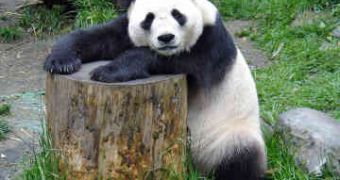Only a while back, a captive-bred panda named Tao Tao was released into the wilderness of south-west China, supposedly to check whether or not specimens such as itself can successfully be reintroduced into their natural habitats and thus help save the species from extinction.
Although the people who were responsible for teaching Tao Tao everything it needed to know to survive in the wild claim that the two-year-old panda is well equipped to deal with life in China's south-west mountains, a new investigation states that the bear is anything but ready to come face to face with the wilderness.
This investigation was carried out by The Daily Mail, whose reporters spoke to Dr. Sarah Bexell, presently employed as director of Conservation Education at the Chengdu Research Base of Giant Panda Breeding.
It is this researcher's belief that captive-bred pandas are merely a “caricature” of those born and raised in the wild, which is why releasing them into the wild is basically the equivalent of sentencing them to death.
Those who have looked into this issue explain that, contrary to its official statements, the Chinese government is first and foremost concerned about making as much money as possible by lending panda bears to zoos and wildlife parks across the world.
Apparently, the costs of borrowing a panda for a period of about 10 years revolve around ₤6 million (€7.37 million / $9.6 million), and overseas zoos are quite willing to pay this much money to have a panda bear flown or shipped in.
What worries conservationists is the fact that, whereas captive-bred pandas benefit from tremendous amounts of attention, those born and raised in the wilderness are experiencing the negative effects of habitat loss and industrial development ever more often.
As Dr. Bexell puts it, “The creatures we create in captivity are a caricature of wild animals. The cute, fluffy panda stories that we always read, where the scientists are saving the panda and everything is OK, are actually hurting the wild pandas.”
Furthermore, “Wild pandas are switched on and primed all the time to constantly sense all that is going on around them. Captivity, on the other hand, dulls that sense. Their life is pre-programmed. They are bored and have no need to think. It is like being in jail.”

 14 DAY TRIAL //
14 DAY TRIAL //